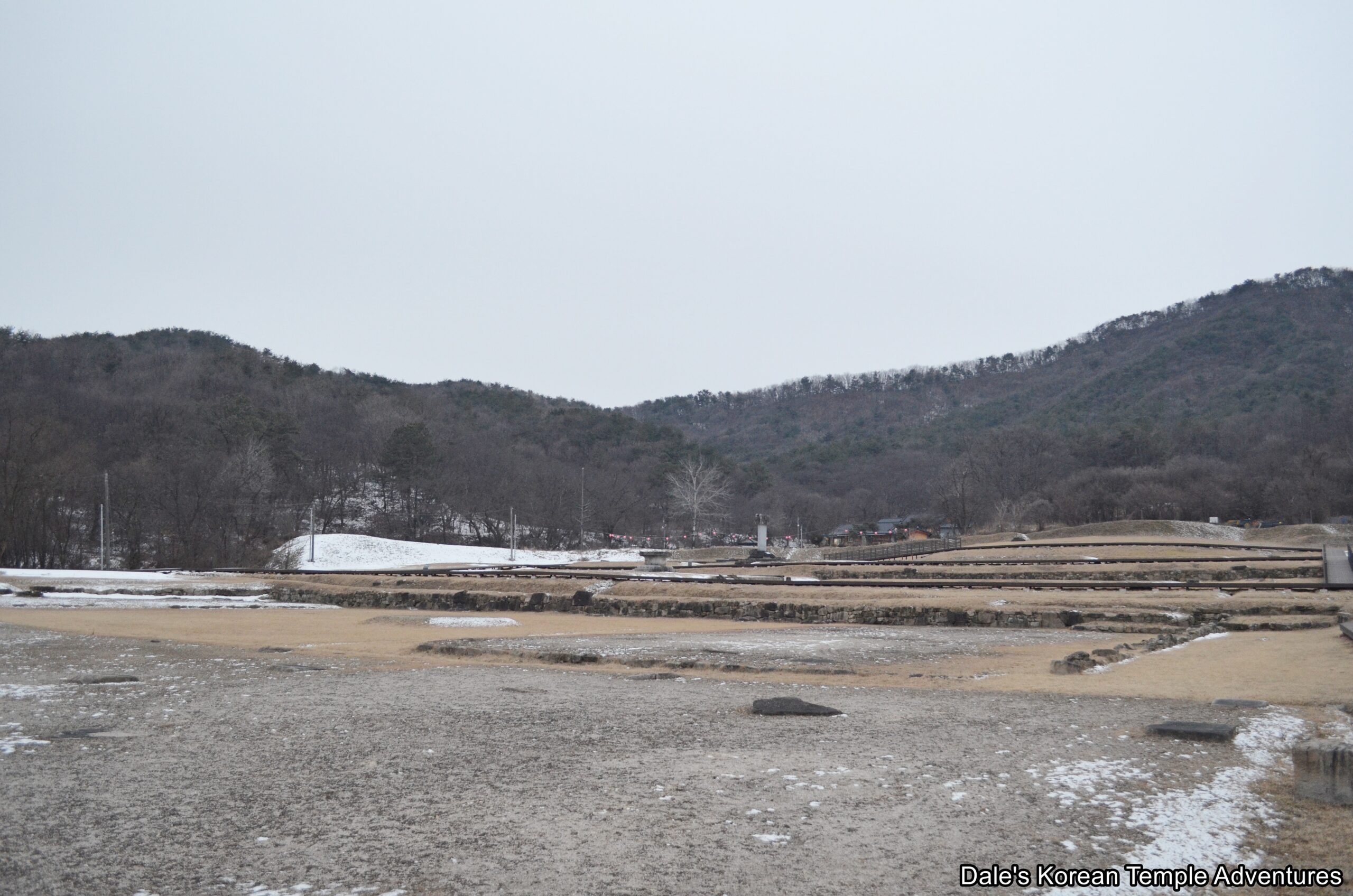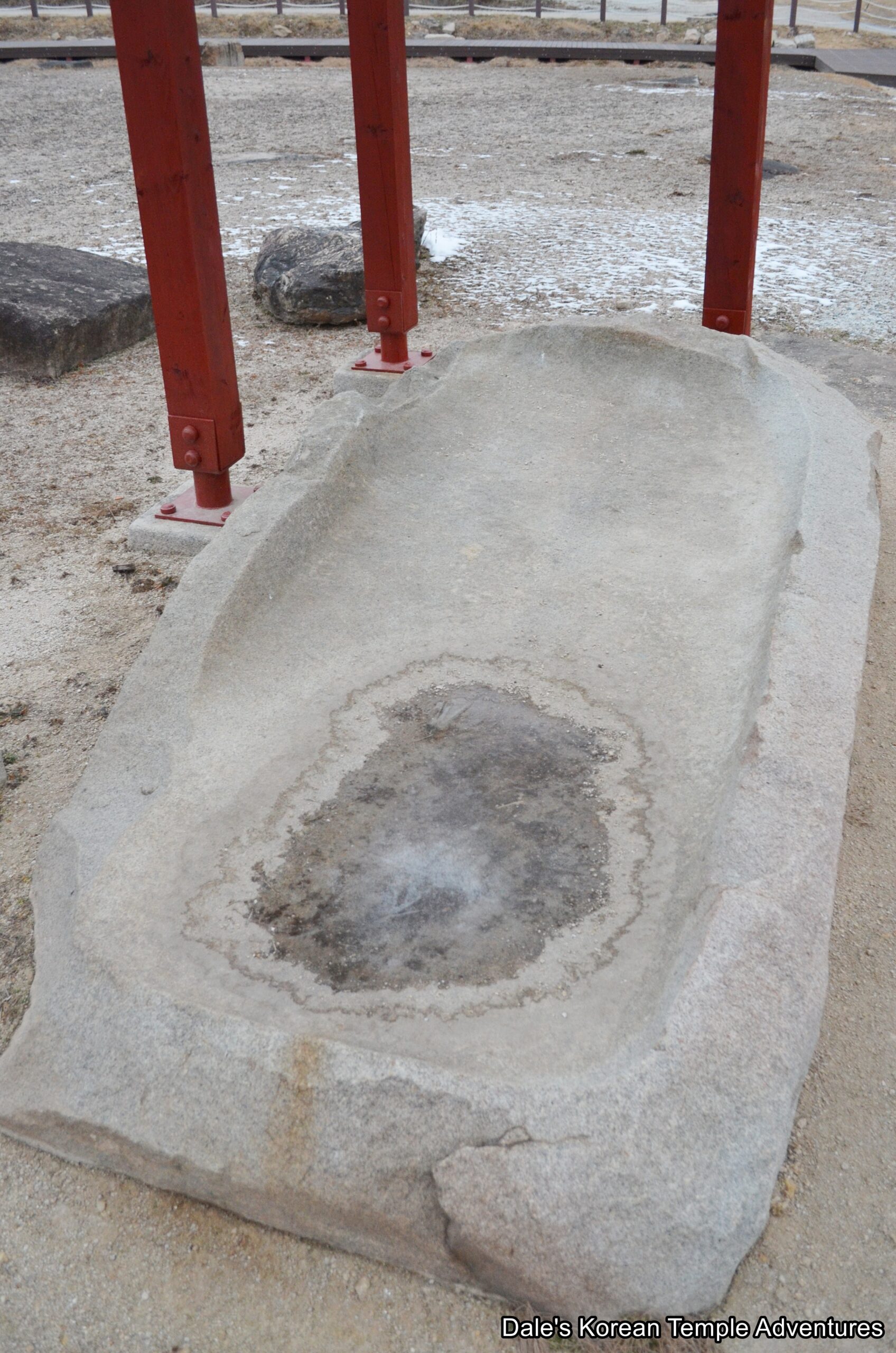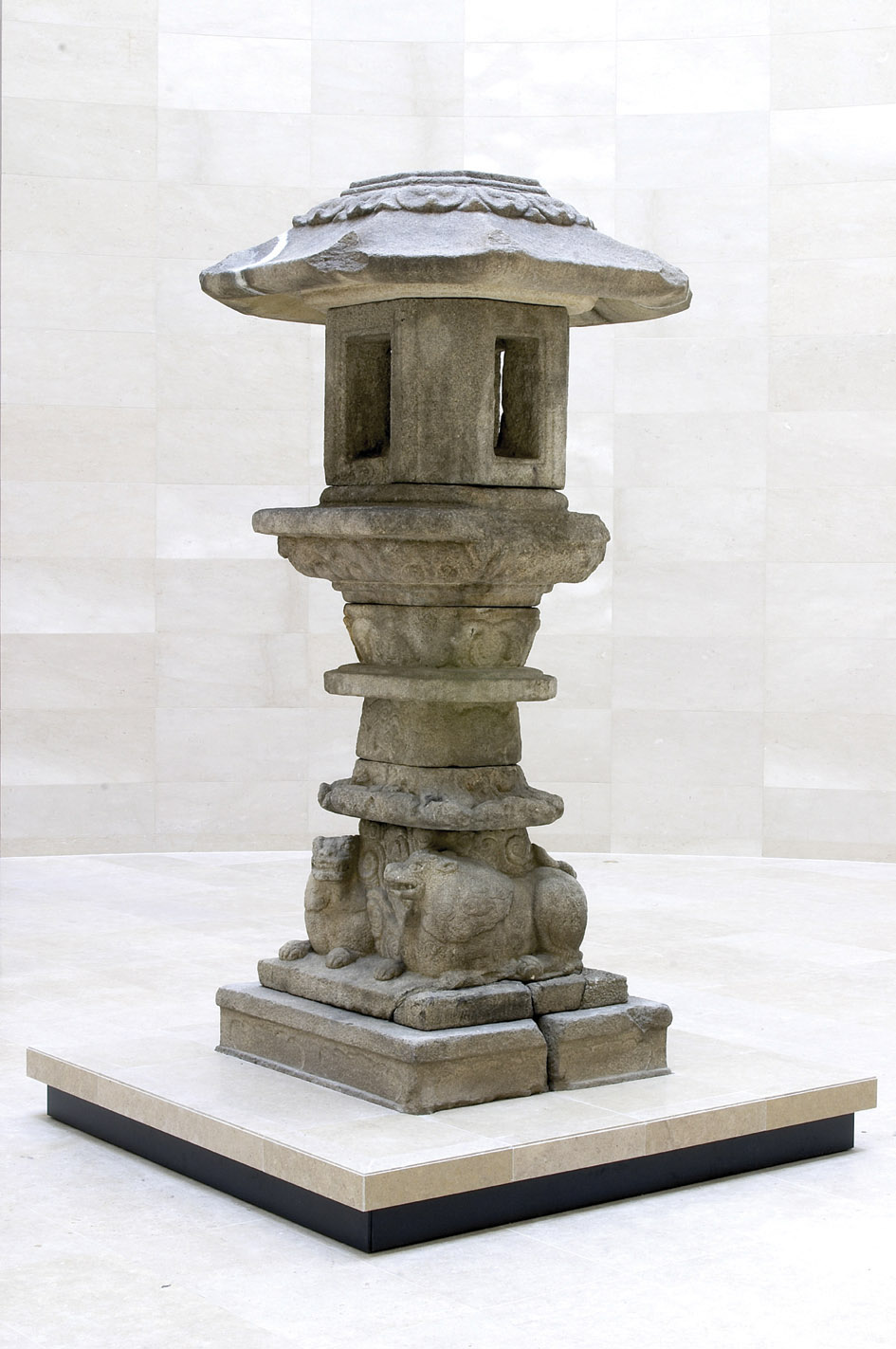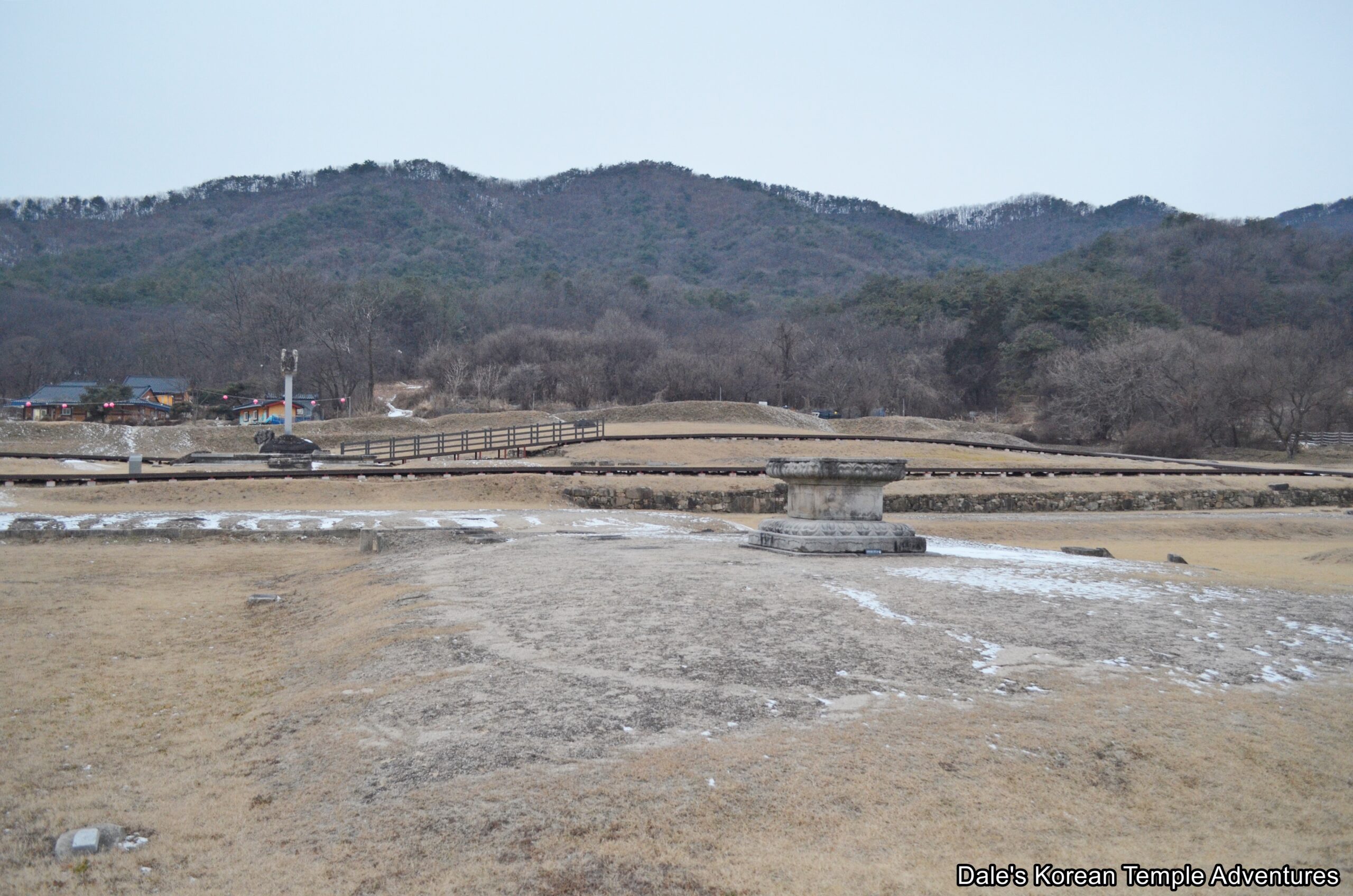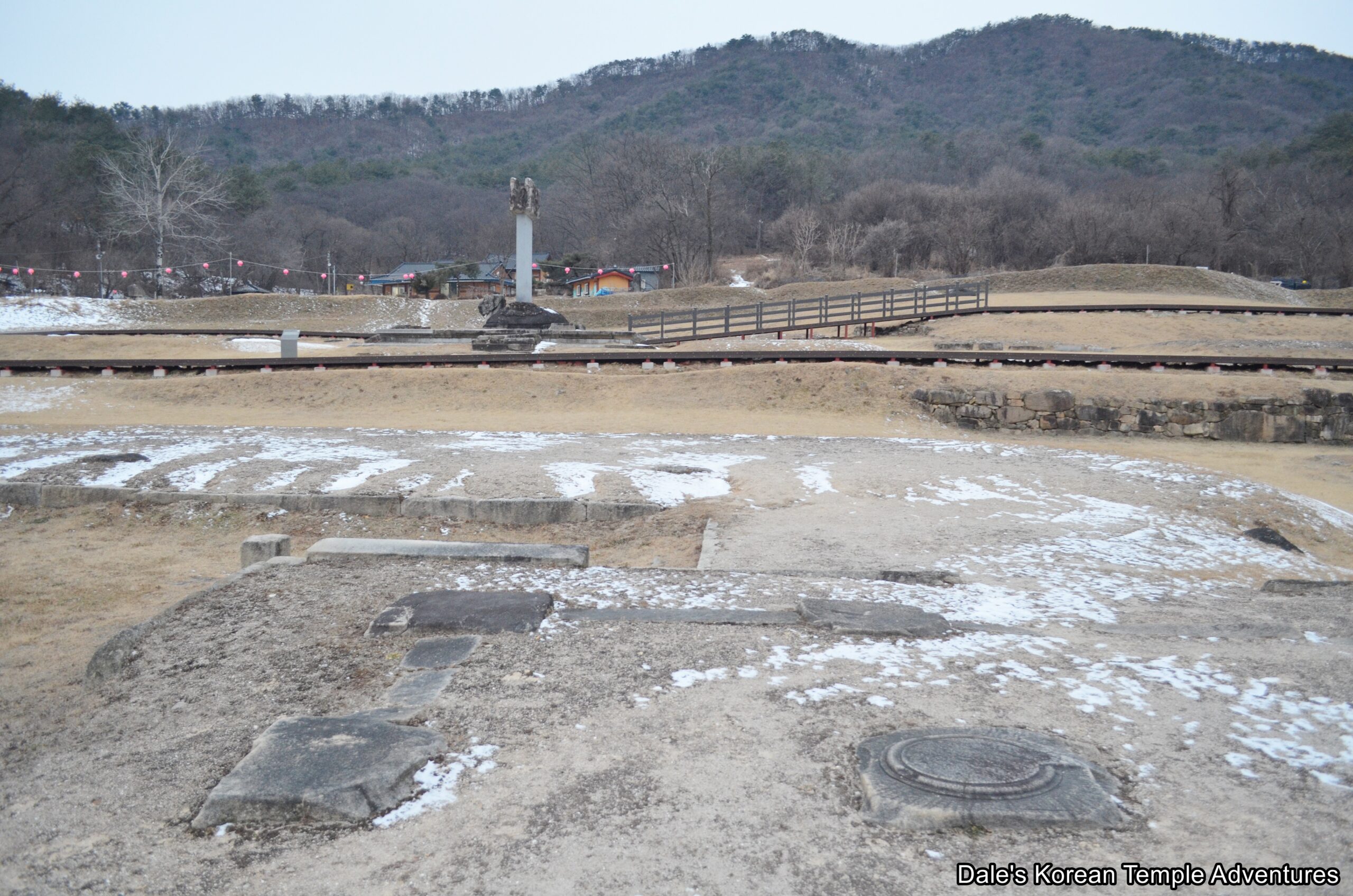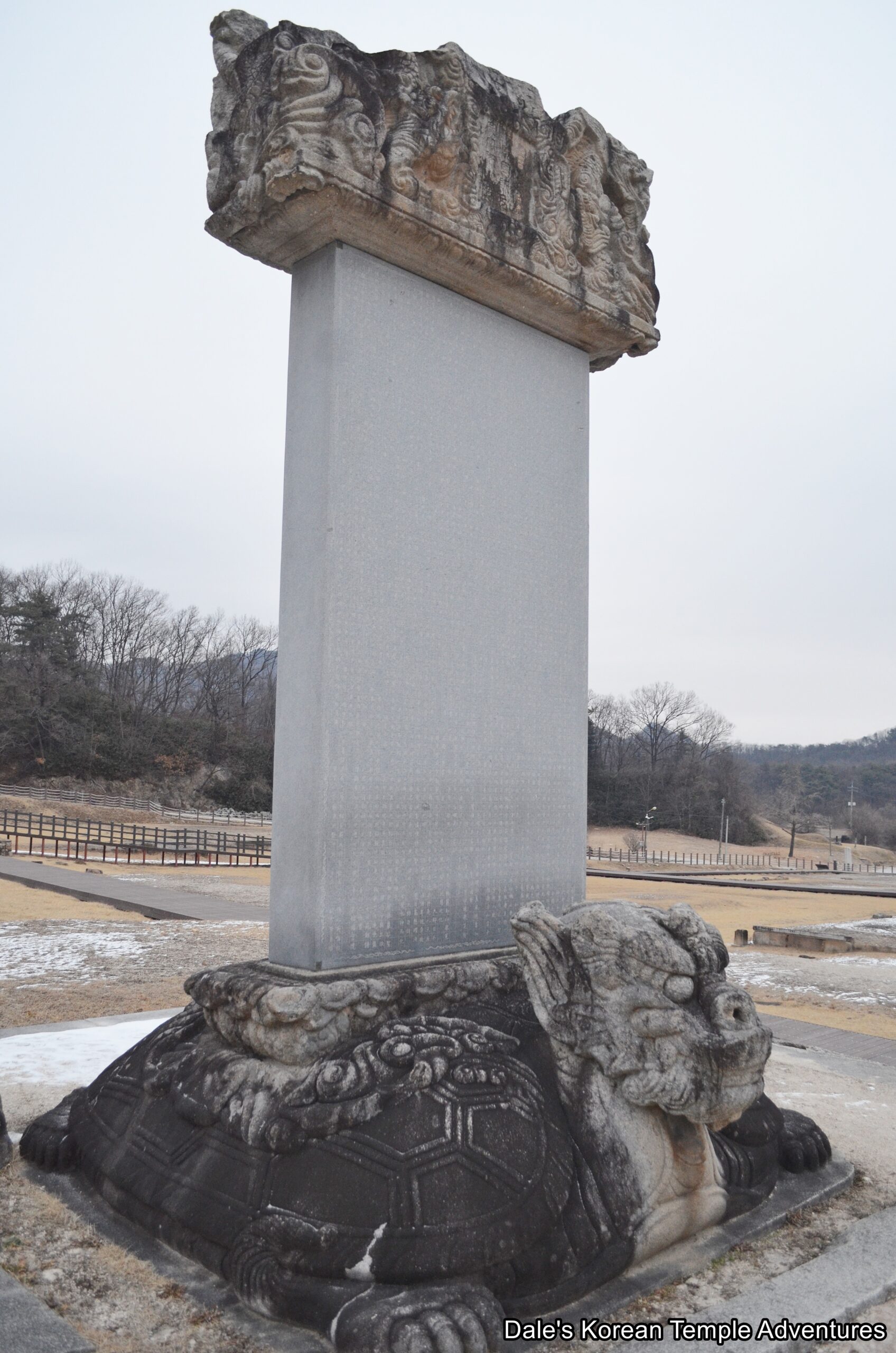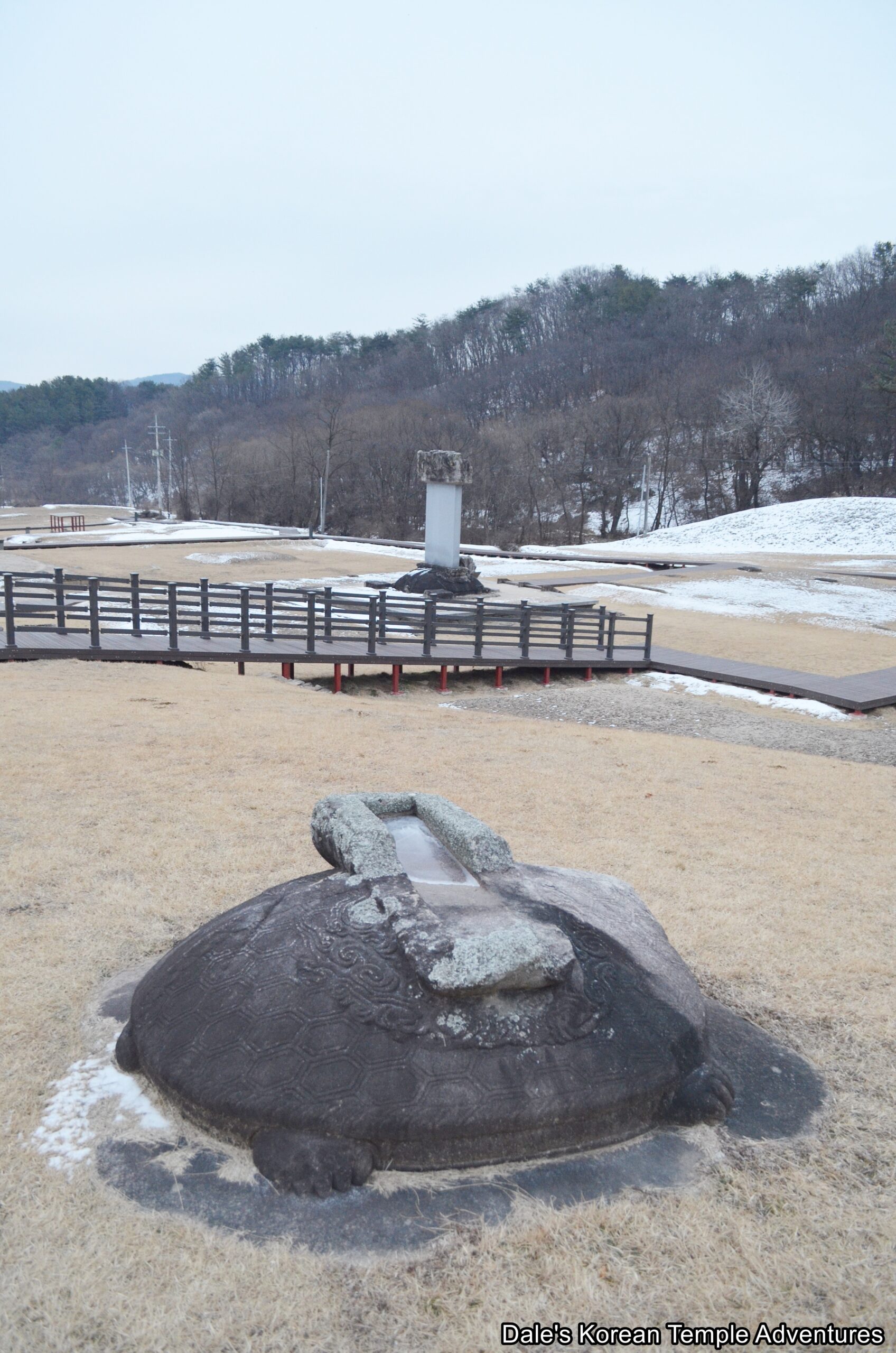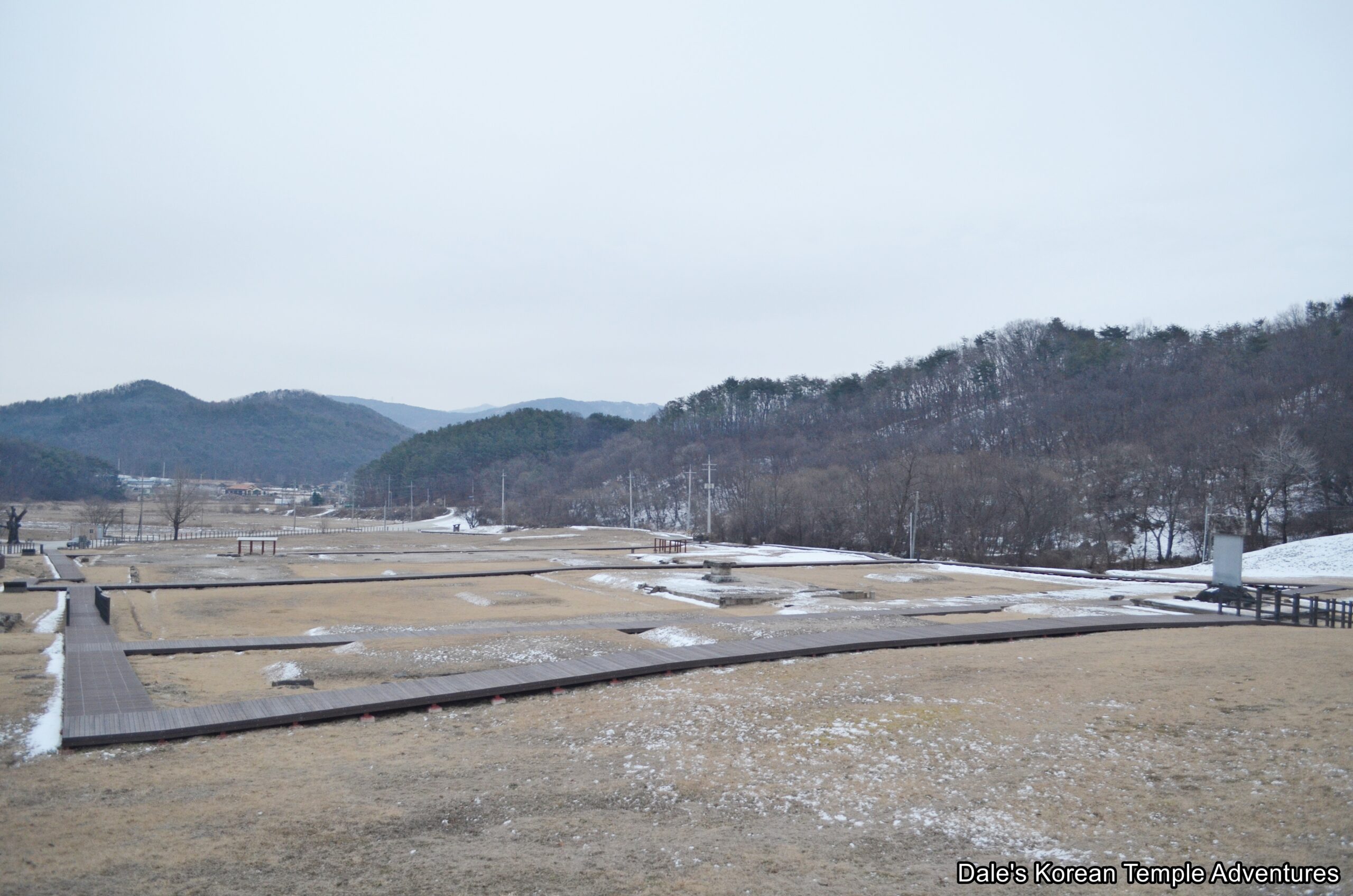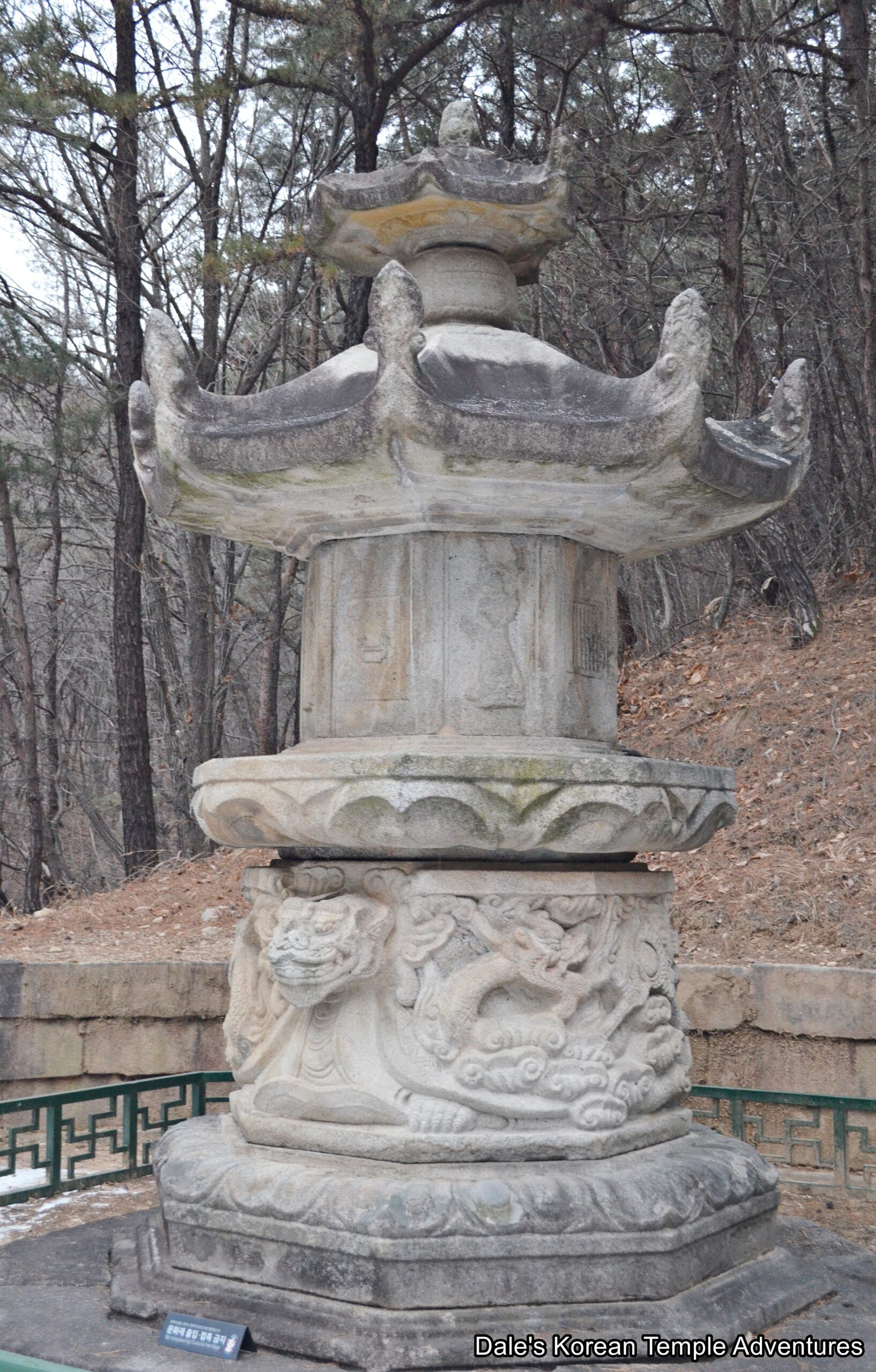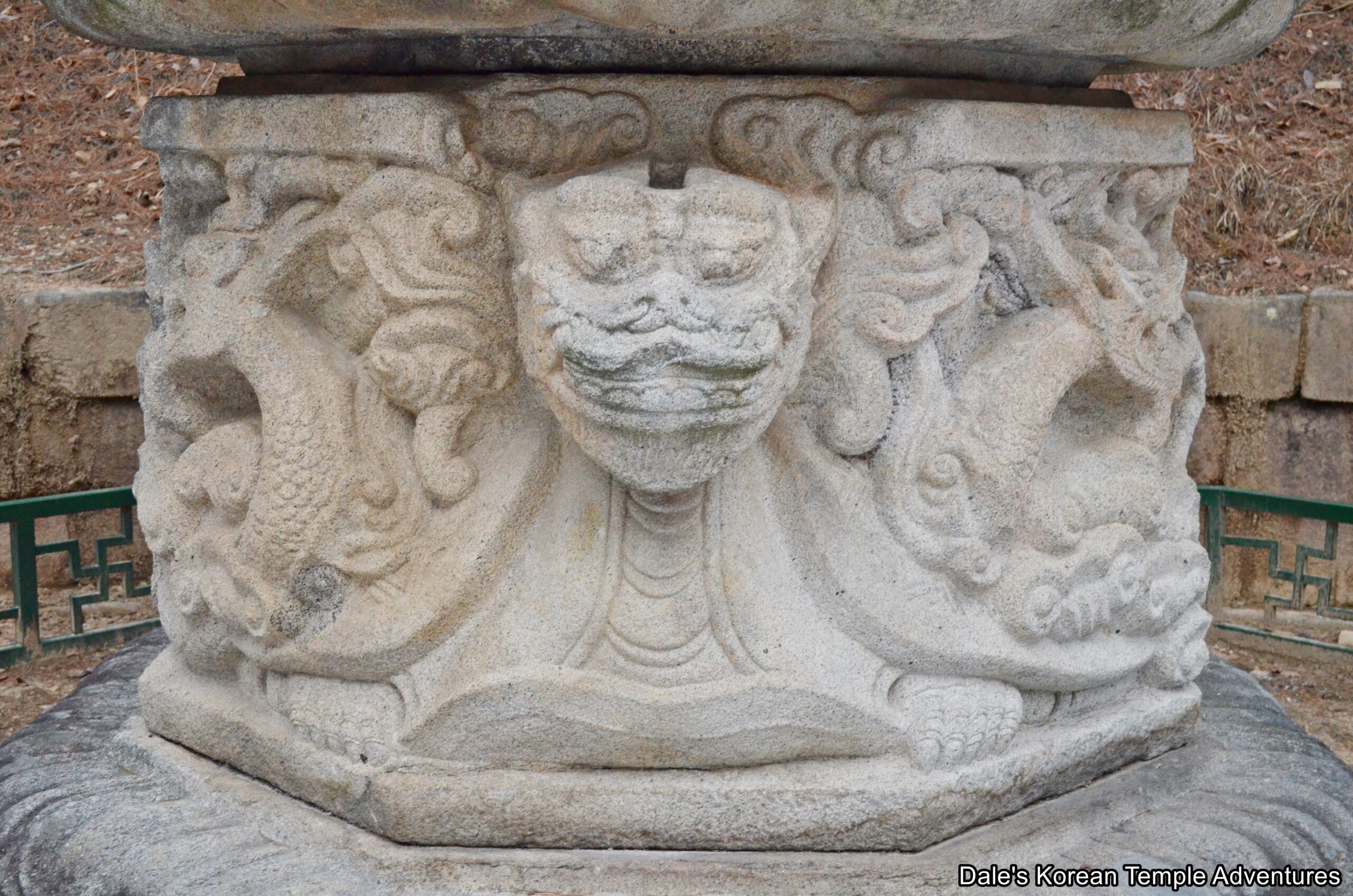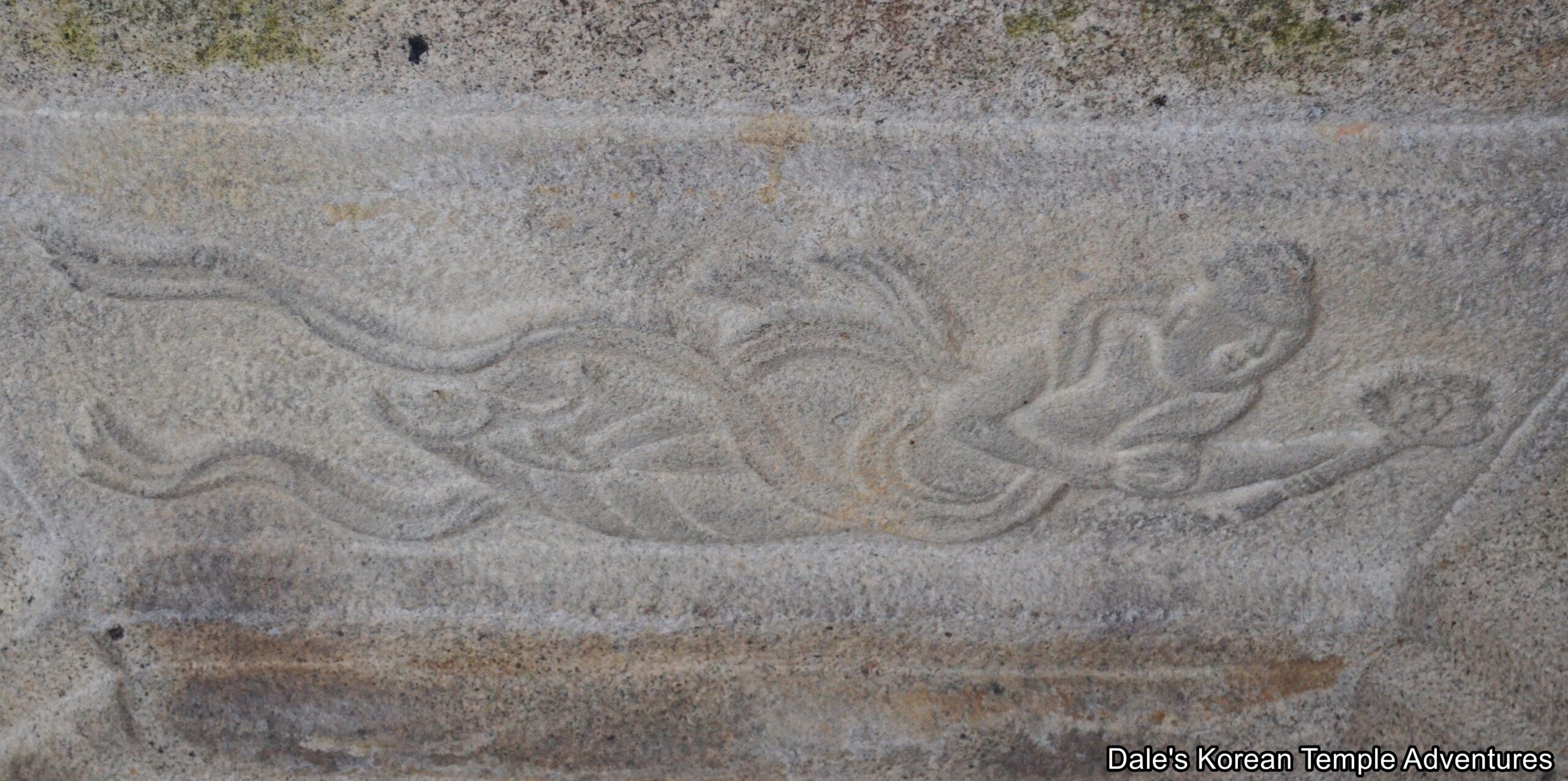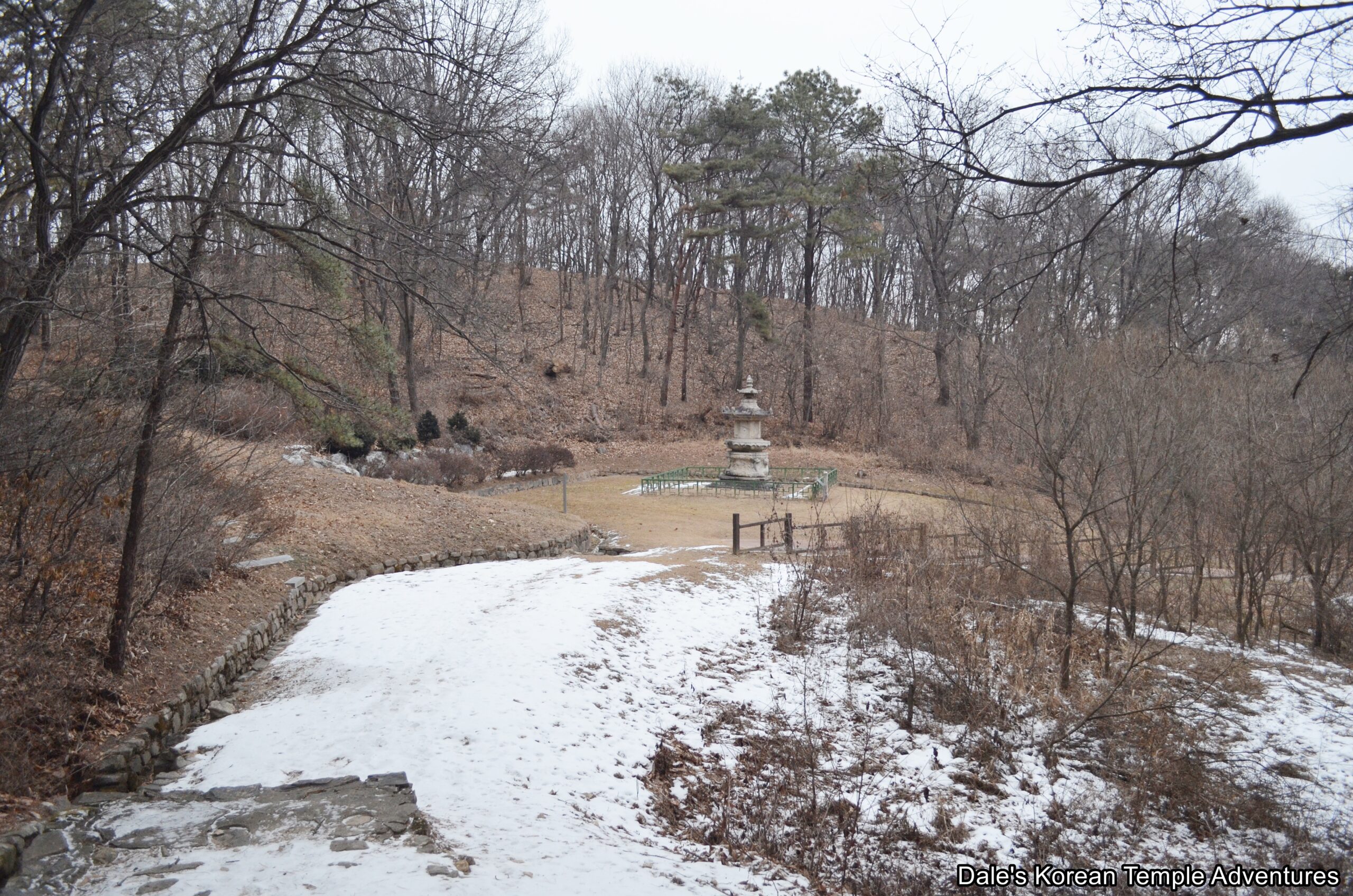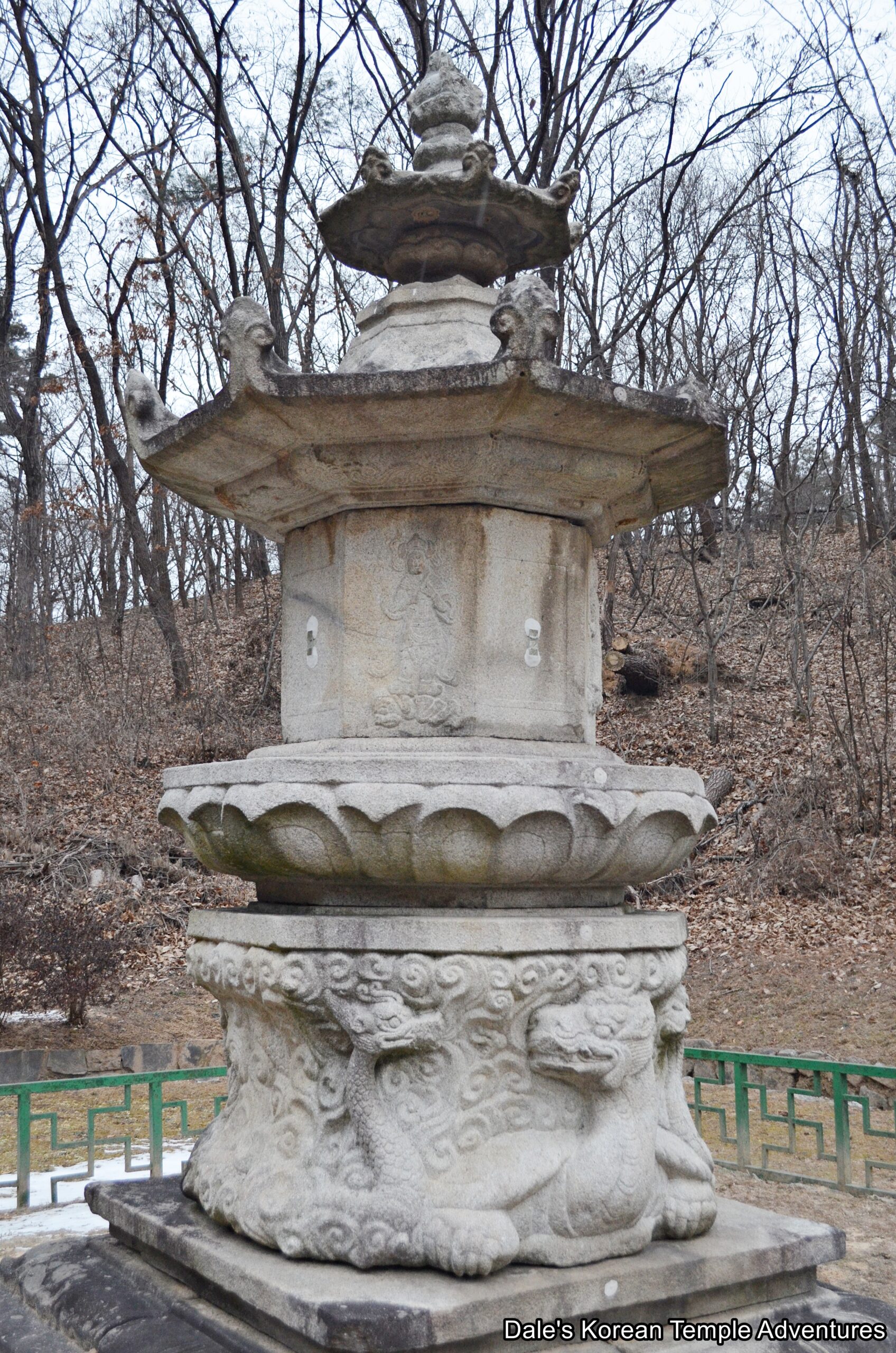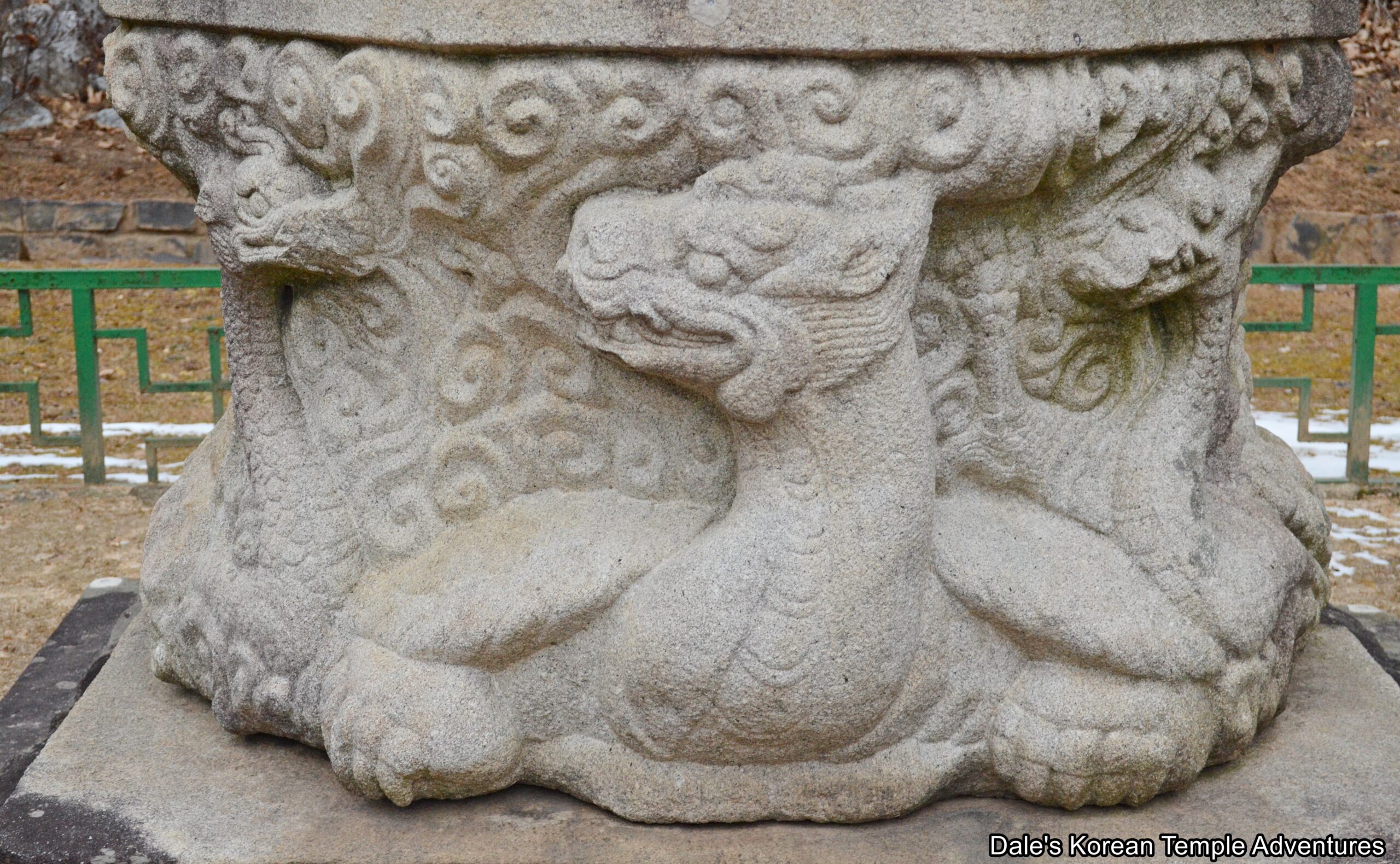Godalsa-ji Temple Site – 고달사지 (Yeoju, Gyeonggi-do)
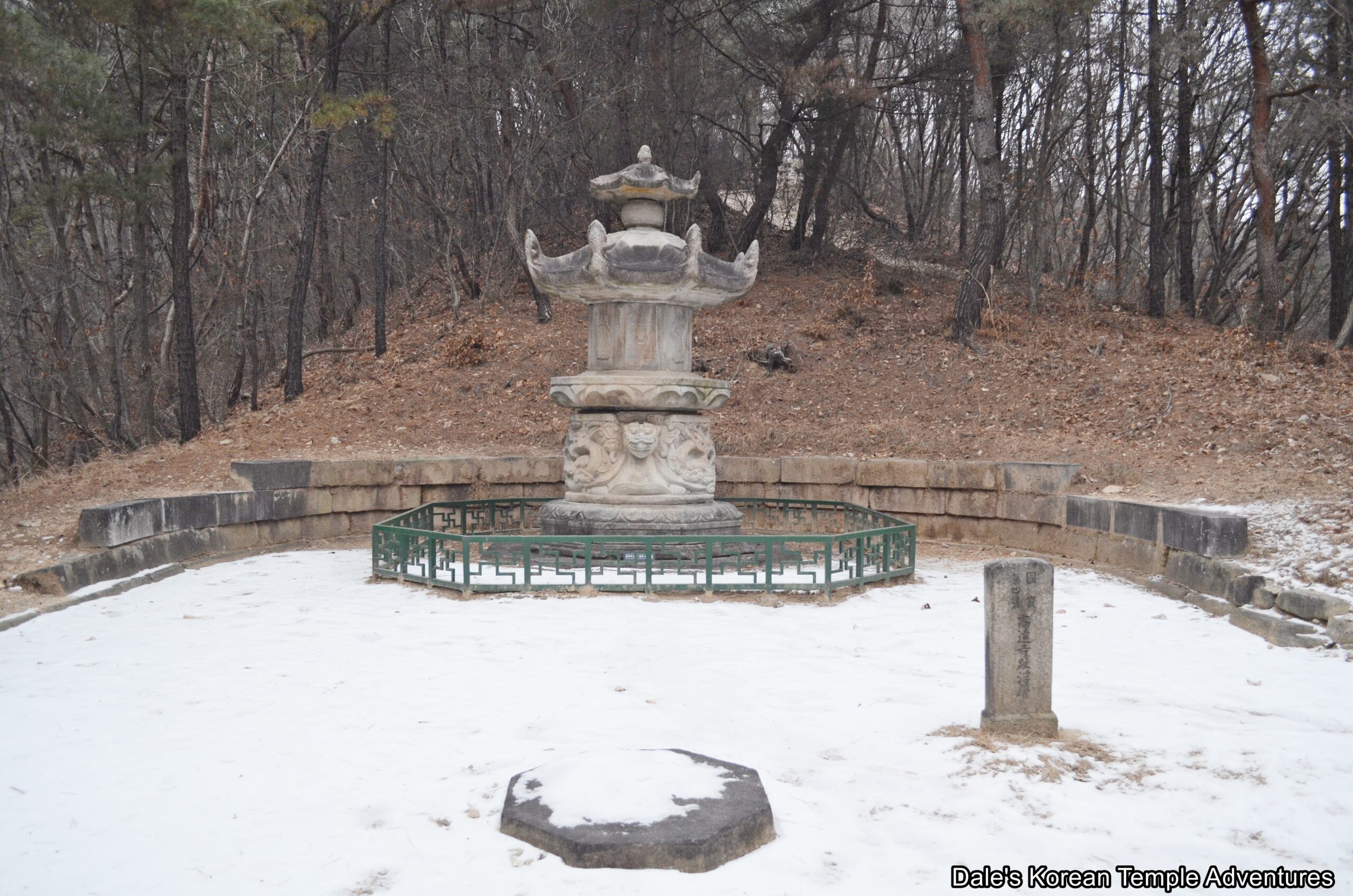
Temple Site History
The Godalsa-ji Temple Site is located in the northern part of Yeoju, Gyeonggi-do in the southern foothills of Mt. Udusan (484.4 m). Godalsa Temple was first founded in 764 A.D. during Unified Silla (668-935 A.D.). As for the name of the temple, and according to a founding legend, there was a stonemason named Godal who completed the construction of the temple. Not only that, but according to this very same legend, Godal crafted several of the most prominent pieces of stonework that are now protected Korean cultural heritage properties. Godal was so focused on his work that he forgot about his family who were starving to death. After he completed the temple and its stone monuments, Godal shaved his head and became a Buddhist monk. Overtime, he became a renowned Buddhist monk. And it’s from this stonemason, who became a monk, that Godalsa Temple got its name.
Some of the most prominent monks of Seon Buddhism resided at the temple like Wongam (778-869 A.D.), Jingyeong (855-923 A.D.), and Wonjong (869-958 A.D.). During the Goryeo Dynasty (918-1392), the temple received state funding and even came to be known as one of the three great Seon Buddhist temples. This funding started with King Gwangjong of Goryeo (r. 949-975 A.D.). In 1260, the temple was greatly expanded and rebuilt, once more. This allowed the temple to grow even larger in size. It’s believed that Godalsa Temple suffered some damage during the Imjin War (1592-98). It’s also believed that the temple fell into disrepair around the 17th century.
Much later, and in 1998, the Yeoju mayor is quoted as saying about the preservation of the temple site, which had been left overgrown for centuries, “We will purchase all the private land near Godalsa-ji Temple Site by next year and then conduct excavations…We plan to purchase 3,000 pyeong (3.3 metres squared) of private land this year.” This resulted in a series of excavations that were conducted on the site starting in 1998. These efforts revealed 9 stone foundations and traces of 28 buildings, 4 wall sections, and 2 stone pagodas dating back to the late Goryeo Dynasty or the start of the Joseon Dynasty (1392-1910). Inscribed roof tiles and various types of earthenware were also found at the temple site.
In total, the Godalsa-ji Temple Site is home to 1 National Treasure, 4 Korean Treasures, 1 Tangible Cultural Heritage, and the temple site itself is a Historic Site.
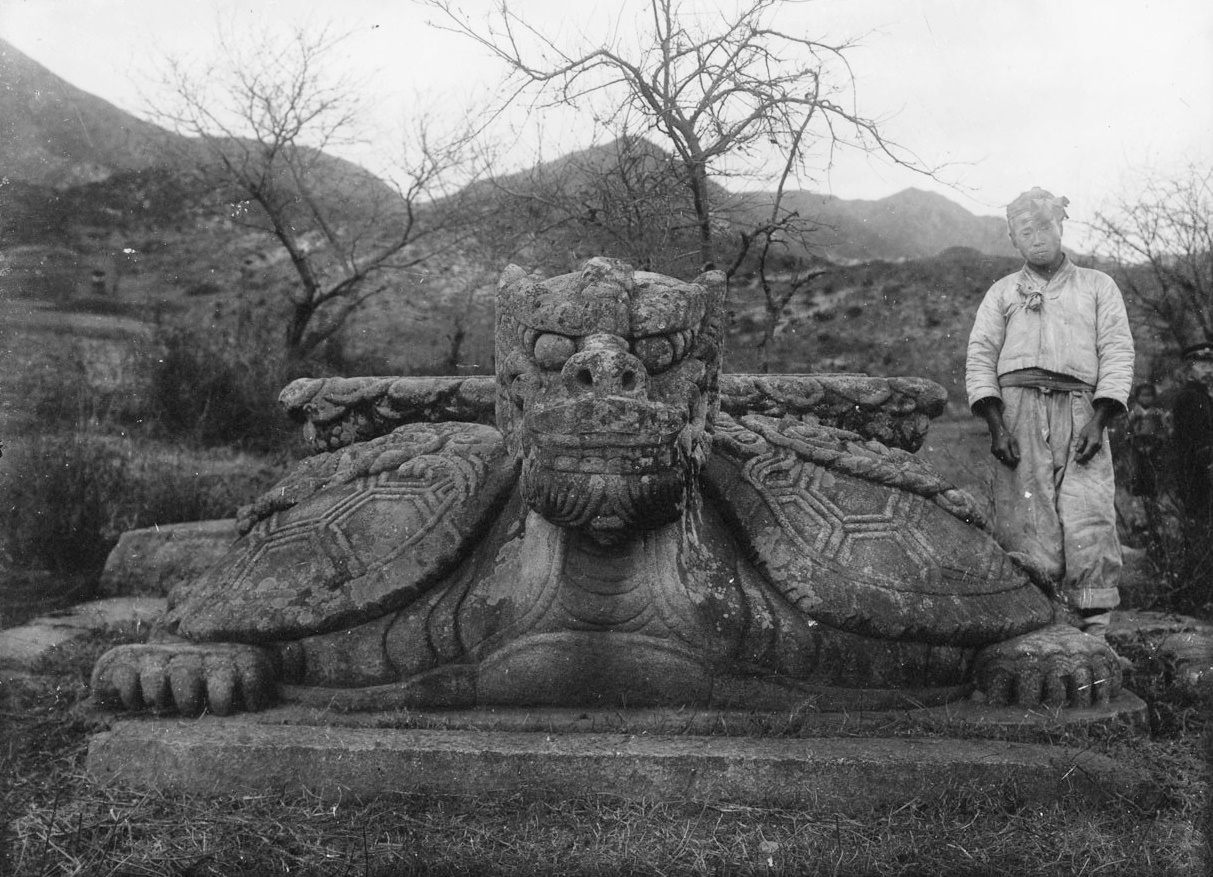
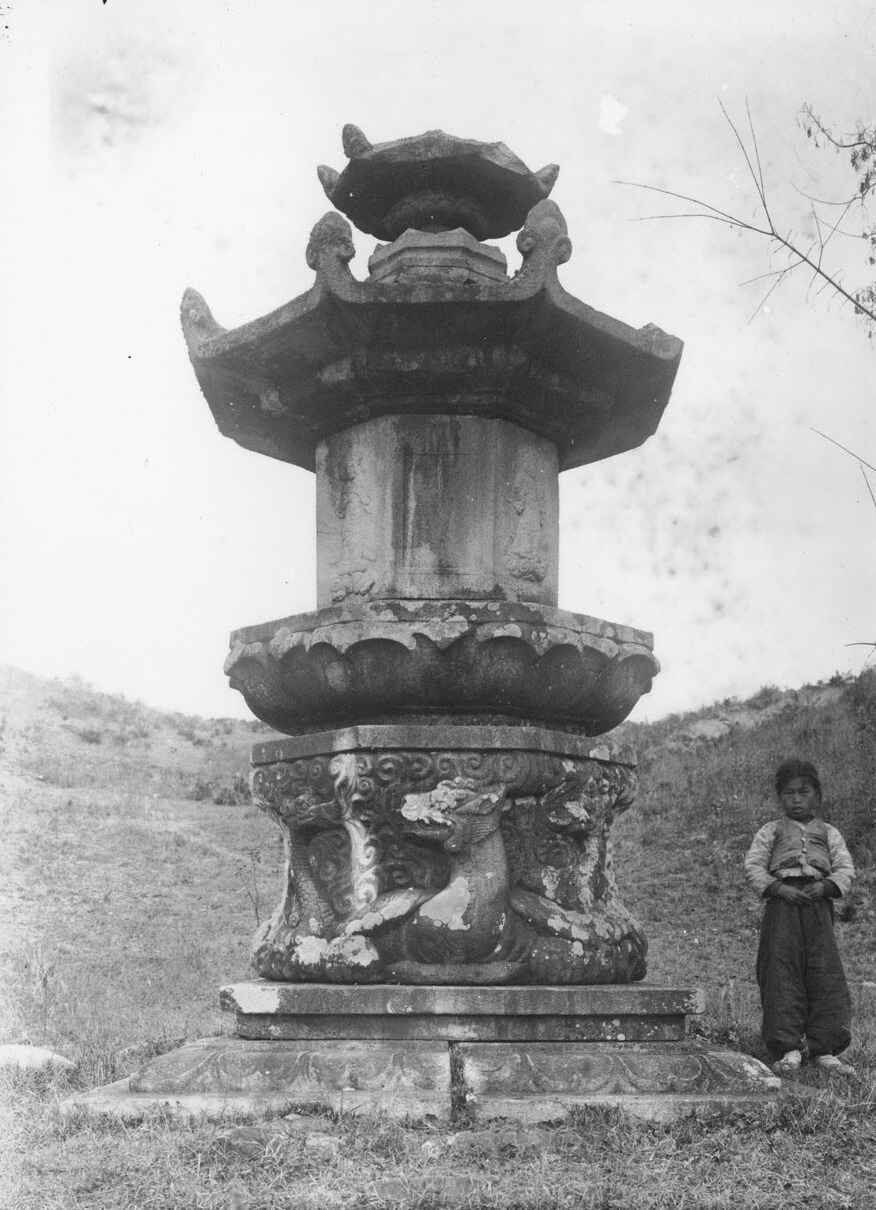
Temple Site Layout
Approaching the temple site from the eastern parking lot, you’ll near the expansive grounds and numerous elevated mounds of earth. These are all former buildings, gates or shrine halls that once comprised Godalsa-ji Temple.
The temple site can be divided into two halves. The front half, which is the eastern portion of the temple site, is the former home to the main hall, monks’ quarters, and a front entry gate, and a bathhouse. There are a pair of stone basins at the front and to the south of this front half of the temple site grounds. The first, which is more easterly, is the “Stone Basin of Godalsa Temple Site,” which is Gyeonggi-do Tangible Cultural Heritage #247. This basin was used to wash grains. They were typically rectangular in shape and placed inside or near the temple kitchen. Additionally, monks or visitors would typically wash their hands in these basins before prayer. As for the other seokjo, or stone basin, at the Godalsa-ji Temple Site, it’s a Tangible Cultural Heritage. Both water basins are placed underneath a wooden pavilion. This water basin is believed to date back to the Goryeo Dynasty, and it’s officially known as the “Stone Basin of Godalsa Temple Site, Yeoju.”
To the rear of these two water basins is the foundation for an entry gate and a couple rows of corridors. In this area was formerly housed the “Twin Lion Stone Lantern from Godalsa Temple Site,” which is Korean Treasure #282. The reason I say formerly is because in 1959 the stone lantern was moved to Gyeongbokgung Palace in Seoul. The stone lantern was later moved to the National Museum of Korea, which is where you can currently see this ornate stone lantern. In total, the stone lantern stands 2.43 metres in height. The foundation stones have elephant eyes engraved on them on all sides of the square base. Above the base, there are two lion statues. Both lions are crouching with their paws placed outward. And on the lions’ backs, you’ll find clouds engraved on them. The cloud patterns are engraved in the middle part of the base stone. Above these are lotus flower patterns on the upper part of the base stone. The light chamber is then placed upon all of these engravings. The light chamber has four windows. What’s interesting about this stone lantern is that the lions are crouching instead of traditionally standing on their four legs. Judging by the style and techniques used on the stone lantern, it’s believed to have first been made in the 10th century during the early part of the Goryeo Dynasty (918-1392). Again, the amazing “Twin Lion Stone Lantern from Godalsa Temple Site” can be found at the National Museum of Korea in Seoul and not at the Godalsa-ji Temple Site.
To the rear of this area, and up a bit of an embankment, is the site of the former main hall at Godalsa Temple. The foundational stones of this structure, which are still partially intact at the temple site, are estimated to date back to Unified Silla (668-935 A.D.). In the centre of the slightly elevated earth surrounded by the partial remains of the foundational stones to the main hall is the “Stone Pedestal at Godalsa Temple Site,” which is Korean Treasure #8. The foundation to the pedestal consists of three parts: the upper, middle, and lower stones. Each of these parts is made of polished stone. Formerly, a statue of the Buddha would have been placed on top of the upper stone; however, the statue of the Buddha is long gone. The upper stone of the pedestal is well polished, and it has carvings of 24 double-folded lotus flowers engraved on its surface. These engravings also appear on the lower part of the base, as well. This type of motif was particularly common during the Goryeo Dynasty. This pedestal is considered to be a masterpiece due to its excellent engravings. The pedestal is believed to date back to the late 10th century.
To the front of the main hall site are two additional mounds to the left and right. These appear to have once been the sites of two pagodas. And to the rear of the main hall site, and up a pathway, you’ll be able to make your way up to the “Stele of Buddhist Monk Wonjong at Godalsa Temple Site,” which is Korean Treasure #6. This stele was originally erected at Godalsa Temple to commemorate the life and achievements of the Buddhist monk Wonjong, who was born in 869 A.D. He would die at the age of 90 in 958 A.D. King Gwangjong of Goryeo bestowed the posthumous title of Wonjong upon him and named the monument “Hyejin.” The stele was destroyed long ago, and only the tortoise-shaped base and the capstone still remained. The fragmented broken body stone can be seen at the National Museum of Korea. The inscription on this body stone details the life of Wonjong.
As for the design of the “Stele of Buddhist Monk Wonjong at Godalsa Temple Site,” the tortoise-based pedestal has bulging eyes. It also has expressive legs and feet, and it has a very short neck. The back of the tortoise-based pedestal is carved with a double hexagonal pattern, while the middle part, which is one -tier higher than the pedestal, is where the main body stone would have been affixed to. This stone support is adorned with swirling cloud patterns. As for the capstone, it features a combination of clouds and dragons on a rectangular stone. According to the inscription found on the stele, it was first made in 975 A.D. This is an important period in Buddhist artistry in Korea because it’s a transition in style from late Unified Silla (668-935 A.D.) to that of the early Goryeo Dynasty (918-1392). So this stele is an important artifact in this transitional period.
To the rear of the temple site grounds, and across a gravel road, you’ll need to make your way up the hillside to get to the “Stupa at Godalsa Temple Site,” which is National Treasure #4. The stupa, overall, has been well preserved. The base of the structure is octagonal in shape. The base consists of three tiers. The middle portion is the most impressive with various carvings that include two tortoises and four dragons. And all six carvings are surrounded by auspicious clouds. The upper tier, on the other hand, consists of elegant lotus flower designs. The main body of the stupa, which contains the sari (crystallized remains) of an eminent monk, is carved with images of the Four Heavenly Kings and a pair of doors that are closed with locks. The roof stone of the body is rather thick and large with floral patterns on each of the upturn corners. And above the roof stone is a canopy in the shape of a roof supported by a spherical stone. The finial atop the structure is partially damaged. The overall shape is quite remarkable considering it probably dates back to the 10th century.
Across the hillside to the north, and down a trail, you’ll come to a clearing that houses the “Stupa of Buddhist Monk Wonjong at Godalsa Temple Site,” which is Korean Treasure #7. Amazingly, this stupa is almost perfectly preserved. The stylobate is designed with lotus flower patterns with overlaid roof stones. Atop this is the base which has stunning images of several turtles looking to the right, as well as four dragons flying around the turtles. The top supporting stones are engraved with lotus flowers. The body of the structure, which contains the sari (crystallized remains) of the monk Wonjong, are adorned with four carvings of the Four Heavenly Kings. The capstone are thicker and stout with flower designs on the edges. The finial to the structure is partially damaged but better preserved than its neighbour, the “Stupa at Godalsa Temple Site.” While the monk Wonjong died in 958 A.D., it’s believed that the stupa was probably first erected in 977 A.D according to the “Stele of Buddhist Monk Wonjong at Godalsa Temple Site.”
How To Get There
From the Yeoju Bus Terminal, you’ll need to take either Bus #988-3 or Bus #988-4 to get to the Godalsa-ji Temple Site. The bus ride will take about 40 minutes over 19 stops. You’ll then need to get off at the site stop.
Overall Rating: 8/10
Temple sites are always so difficult to rate. If you’re a temple site enthusiast, then the Godalsa-ji Temple Site should rate quite highly; however, if you see nothing more than a barren field with a few stone artifacts scattered in a field, then it rather obviously won’t rate quite as highly. So a rating of any temple site can be quite relative. With all that being said, and as a temple enthusiast, the Godalsa-ji Temple Site is definitely my cup of tea from the “Stupa at Godalsa Temple Site” to the “Stele of Buddhist Monk Wonjong at Godalsa Temple Site” and the “Stupa of Buddhist Monk Wonjong at Godalsa Temple Site.” The one National Treasure and four additional Korean Treasures are well-preserved, especially when one considers their age.
